|
|
Racial images on magic lantern slides. part 3. |
|
|
||||||||||
| Go to: | part 1 | part 2 | part 3 | part 4 | part 5 | part 6 | part 7 | part 8 | part 9 | part 10 |
|
|
||||||||||
|
This item includes words or images that may be racially or otherwise offensive. They
are included here as historical reproductions from a different period with
different standards, and do not indicate any support or approval
of such ideas and statements by the webmaster/author of this site. They show the role that non-western figures often played in magic lantern stories and the way they were depicted on the slides. |
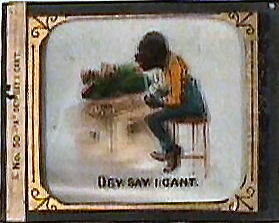 Attack on the
Watermelon. Attack on the
Watermelon.Two cartoons of a black man sitting on a stool in front of a table with a number of watermelons. After eating the melons he is holding his bulging stomach full of watermelon. He looks a bit uncomfortable afterwards. The picture's are respectively entitled "Dey say I cant" and "But I'se done gone done it". Titles are printed on the bottom front edge of the glass slide. The name of the manufacturer is T. H. McAllister, Manufacturing Optician, 49 Nassau Street, N.Y. and is typewritten on a label on the back left edge of the slide. There is also an other label on the back of the slide with a printed notation "Attack on the Watermelon.". The slides measure 3 1/4" x 4" (10 x 8.2 cm). |
|
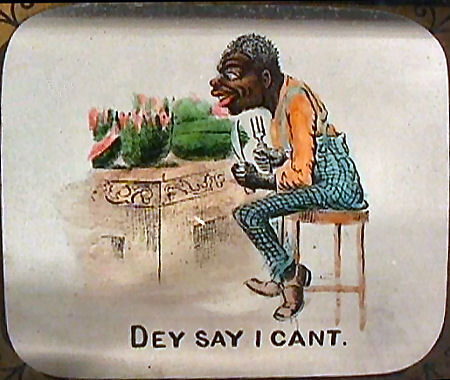 |
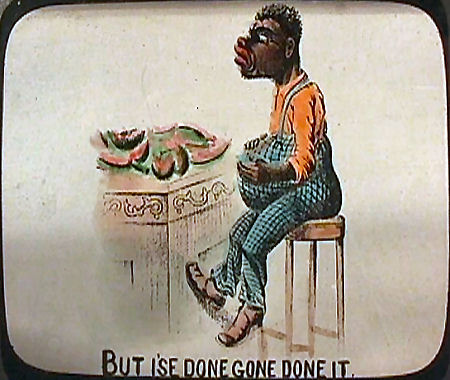 |
|
The Elephant's
Revenge. Two magic lantern slides from a set of eight, made by Newton & Co in their 'Cheap Series'. The slides are mounted in a wooden frame. |
|
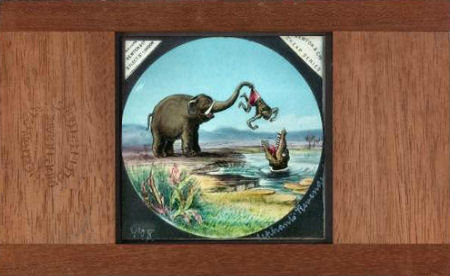 |
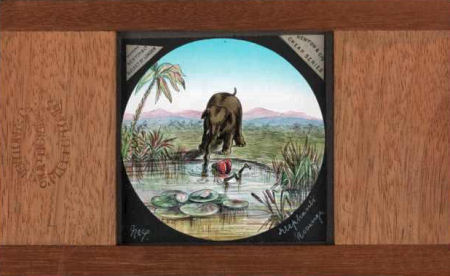 |
|
The story of The Elephant's Revenge was published in
several versions, made by different
manufacturers. Below a moving version of this cruel happening: |
|
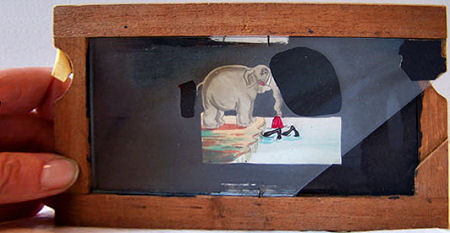 Double slipping magic lantern slide showing an African elephant dropping a native to his doom in the jaws of a hungry alligator. The slide is framed in mahogany; size 7 x 4 inches (18 x 10 cm). |
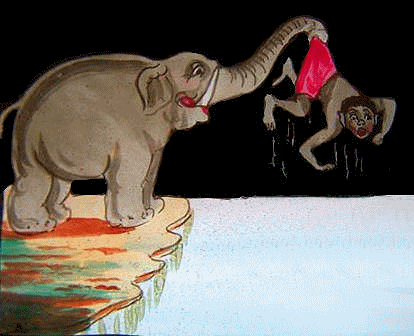 |
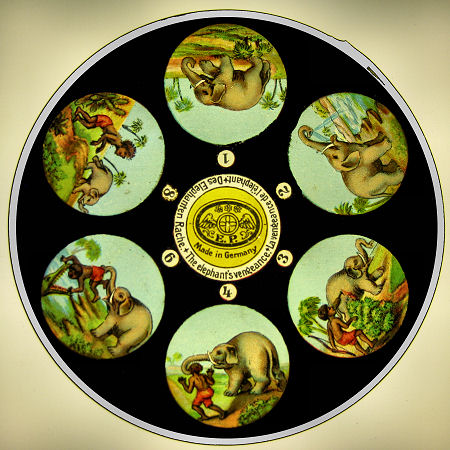 |
The story 'Die Rache des Elefanten' by
Wilhelm Busch was also depicted on a round,
disc-shaped magic lantern slide made by the
manufacturer Ernst Plank. These slides were released for a small number of magic
lanterns that were suitable for this, such as the Bosco lantern from Bing (G.B.N.)
and the 'Climax' and 'Globus' lanterns from Ernst Plank. They were sold with or
without cover glass and often provided with a metal ring around the outer edge
of the glass. Thanks to this ring, the round disk remained better in place in
the lantern and could be turned around more easily. The diameter of the disks was usually 8.5 cm or 11 cm (E.P.) or 10, 11.5 or 15 cm (G.B.N.). The subjects were mostly fairy tales or comic stories and were often also available in the series of elongated lantern slides. Because the discs could only contain six or eight images, the stories were often shortened. Many stories were published in a version with six as well as eight images. |
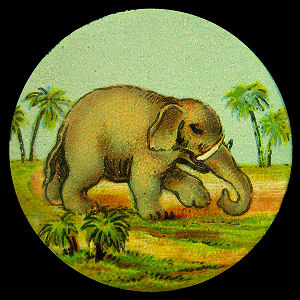 |
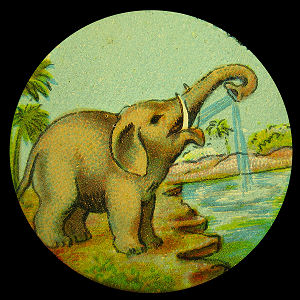 |
 |
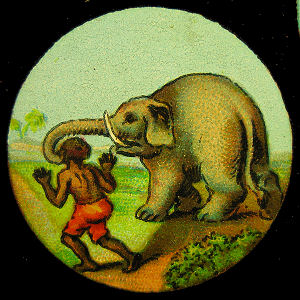 |
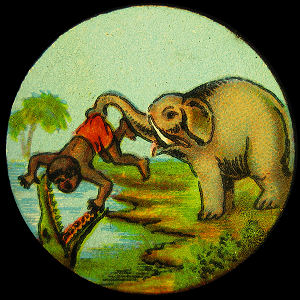 |
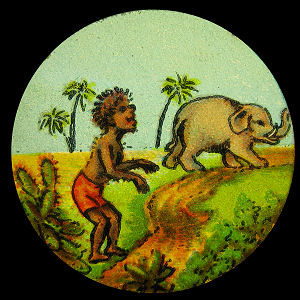 |
 This set of four magic lantern glass slides depicts the tribulations of a heavily caricatured black man riding a penny farthing bicycle. The first slide is labelled "Mounting Beautifully" and the events progress through "Awfully rough - oh dear!", "Disaster" and "Results". Each slide has been delicately hand-painted and measures 8.2 x 8.2 cm. |
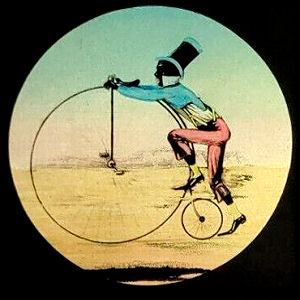 |
|
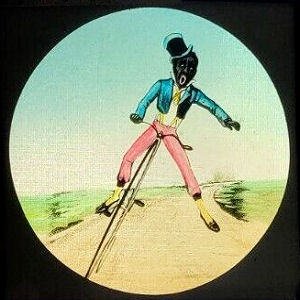 |
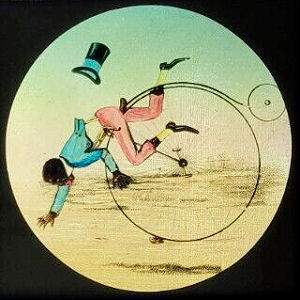 |
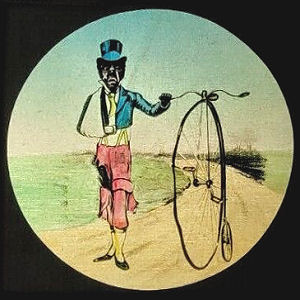 |
|
Sambo's visit to Crab Island. Made by J. Green & Son, England, set of 12 slides, c. 1890. Only six of the twelve slides are depicted here. The slides are square, size 8.2 x 8.2 cm, so the images don't show the entire picture of the slide. |
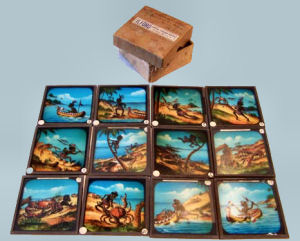 |
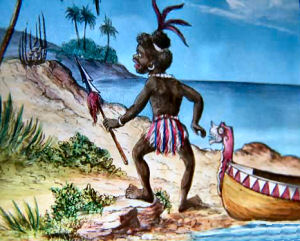 |
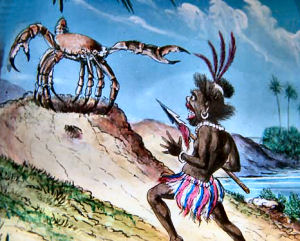 |
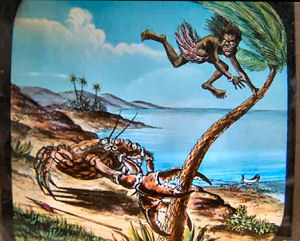 |
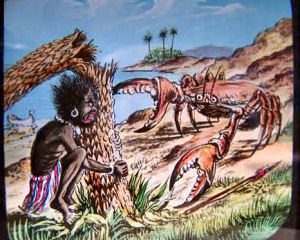 |
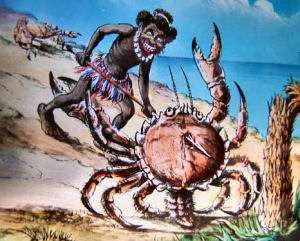 |
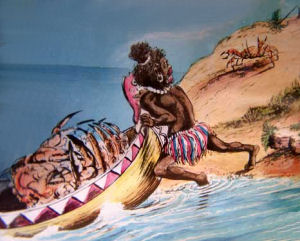 |
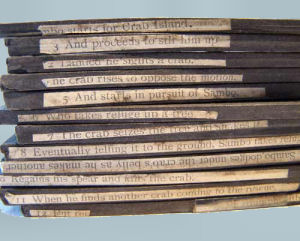 |
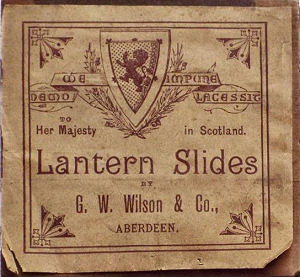 |
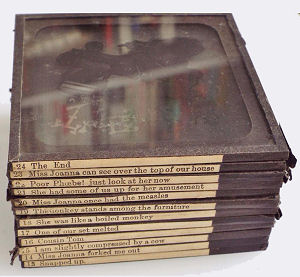 |
JIMMY, Scenes from the Life of a Black Doll, told by himself.
|
|
Set of 24 magic lantern slides, 8.2 x 8.2 cm, in a
labelled wooden box. Probably made by G.W. Wilson & Co., Aberdeen. (Only 10 slides are shown here) The set is after the January 1888-published book, Jimmy: Scenes from the Life of a Black Doll written by John G. Sowerby. It tells the first-person story of Jimmy, a black doll, and the ill treatment he receives from his owner, a little girl named Joanna, concluding with his admonishments to children to treat their dolls more kindly. |
 |
|
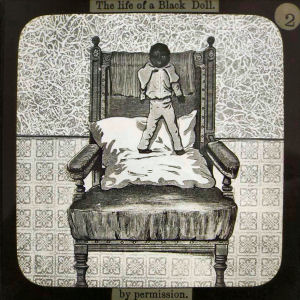 |
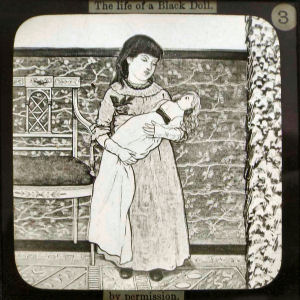 |
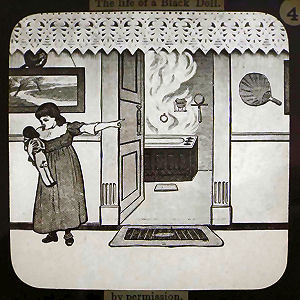 |
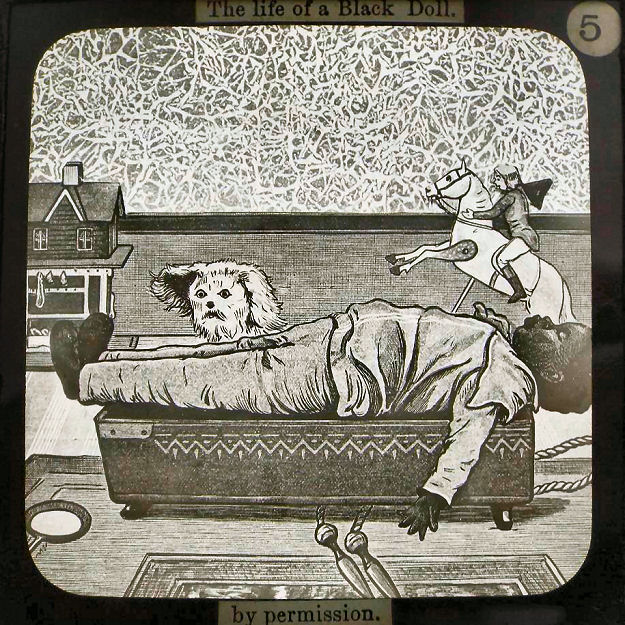 |
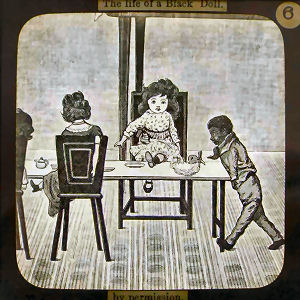 |
|
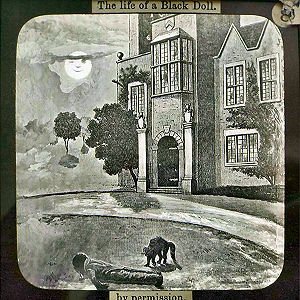 |
||
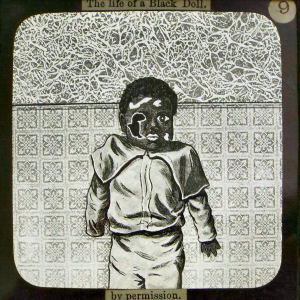 |
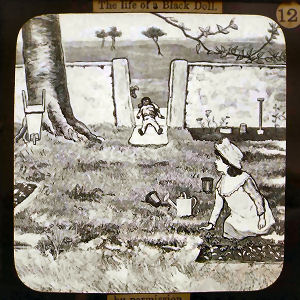 |
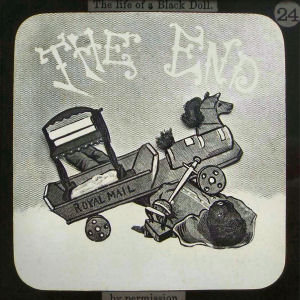 |
| Children at that
time usually did not handle their black dolls with love and care. A quotation
from the book Racial Innocence: Performing American Childhood from Slavery to
Civil Rights by Robin Bernstein: In the 1863 book Dolly and I .... a black doll named Dinah 'had seen hard service in her day, and did not look as though she would last much longer'- a decimation that none of the white children in the story regret. And in Frisk and his Flock .... a group of white children laugh when a white girl named Eva 'hung her old black doll against a beam, for a punish. .... A poem 'Topsy' .... tells of a doll named Topsy who is unloved by her girl owner. The girl gives the unwanted doll to the poem's narrator, who makes her into a maid to a white china doll. The girl then drops Topsy and breaks the doll's head off. And in 1885 Jimmy: Scenes from the Life of a Black doll, a white girl 'mistress' repeatedly whips her black doll. |
||
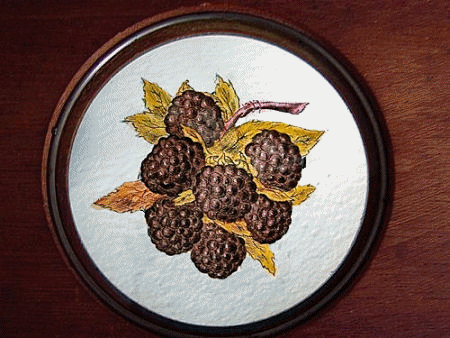 |
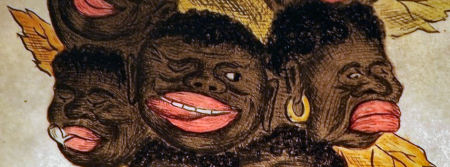  Single slipping slide made by T.H. McAllister, New York. Name of the manufacturer is pressed into the wood of the frame. |
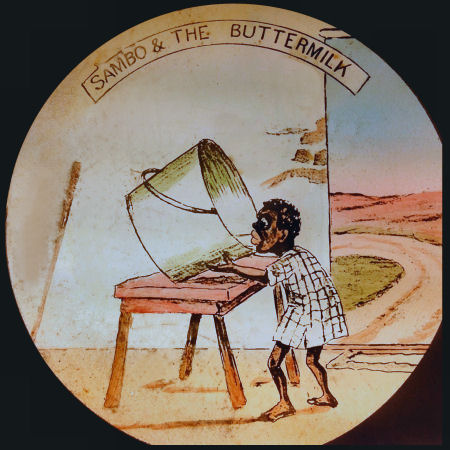 |
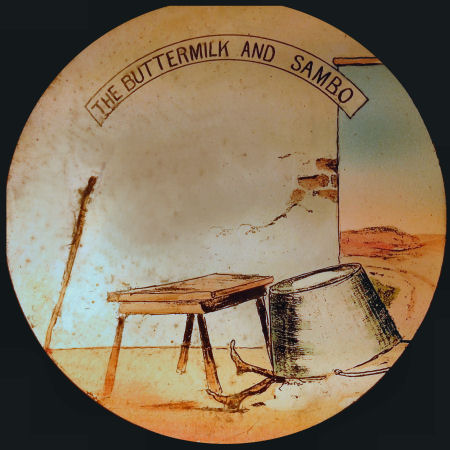 |
|
Sambo and the
Buttermilk - The Buttermilk and Sambo.
|
|
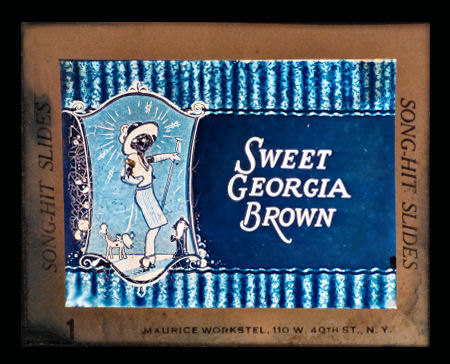 |
 |
|
Two slides of a set of
Sing-along slides. #1 and #5 of the well know song 'Sweet Georgia Brown'. |
|
 Travelling salesman selling kitchen accessories to the natives. A funnel can be used as a headgear. |
|
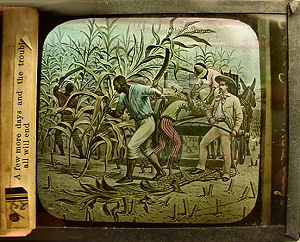 Slide from 'Uncle Tom's Cabin'. It is entitled "A few more Days and the Trouble all Will End " Made by Buswell Mfg Chicago. The slide measures 4 x 3 1/4 inches. |
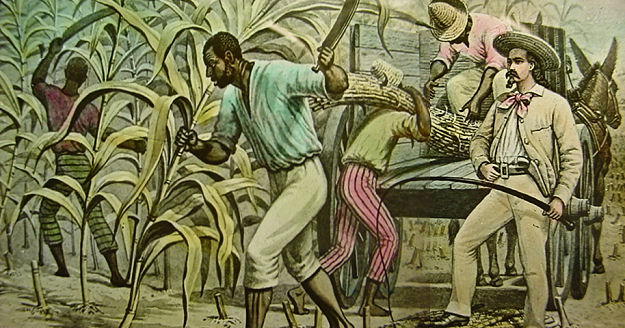 |
|
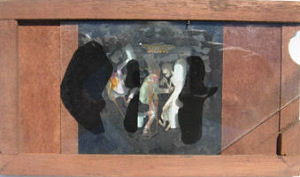 |
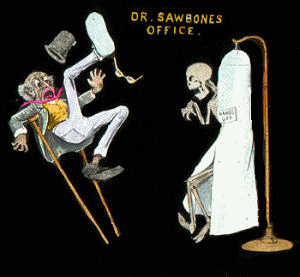 |
Dr. Sawbones Office. Single slipping slide. Manufacturer unknown. Mahogany frame, size 7 x 4 inches (18 x 10 cm). |
 |
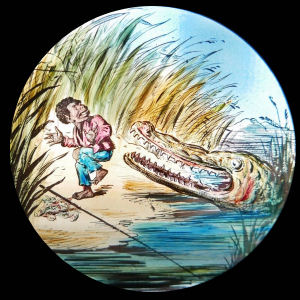 |
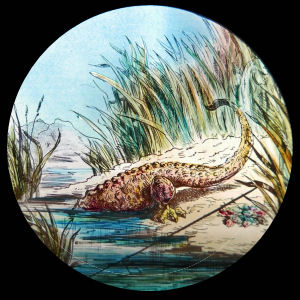 |
|
A small set of three square hand painted magic lantern
slides. When a black man is fishing an alligator is leaping out of the water.
The third slide shows the alligator with his head under the water. The
fisherman's pole and clothes on the riverbank suggest that the alligator ate the
poor man for lunch. |
||
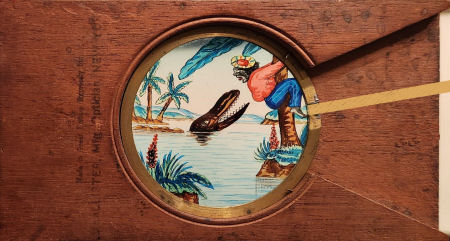  Mechanical magic lantern slide with a lever system. When the lever is moved, the fearsome head of the crocodile opens and closes. The maker of the slide is McAllister, an optician in New York. The dimensions of the slide are approx. 18 x 10 cm. |
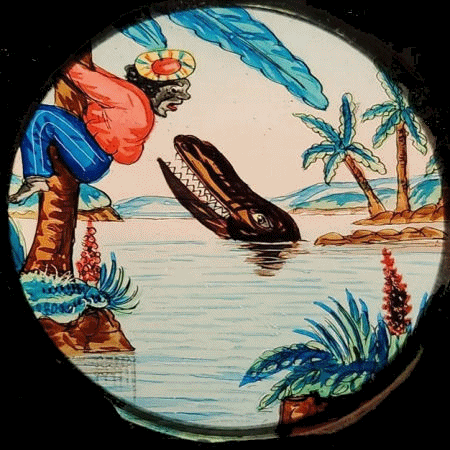 |
|
More...... |
| |
©1997-2024 'de Luikerwaal' All rights reserved. Last update: 19-08-2024. |
|